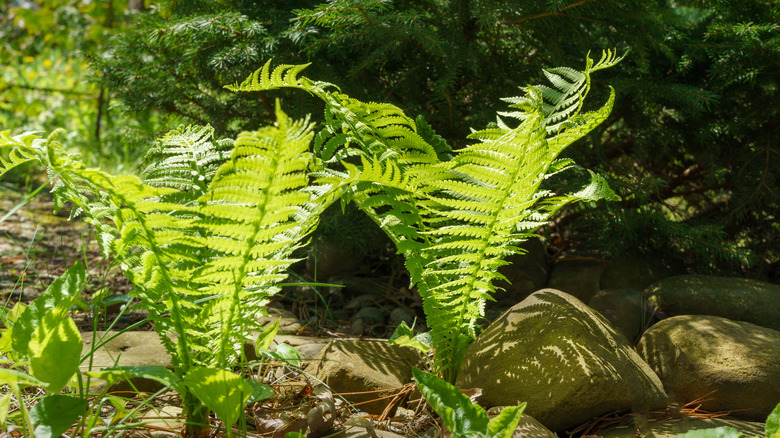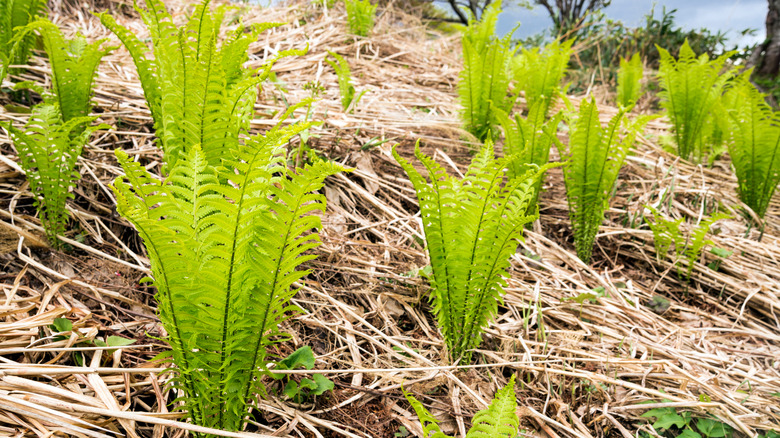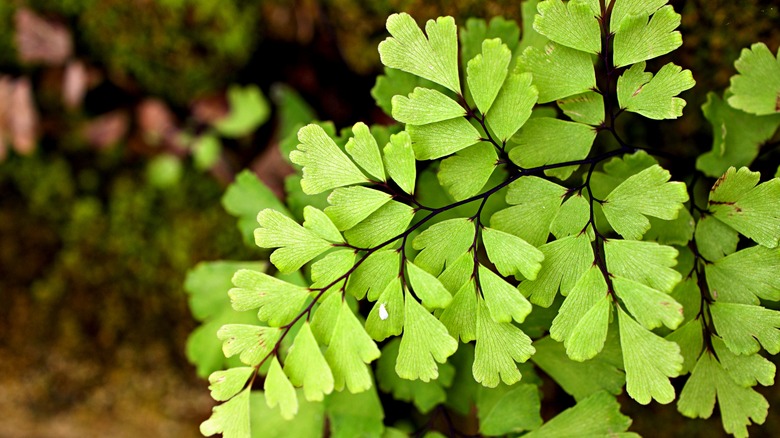Why You Won't Want To Grow Ostrich Ferns In Your Garden
Ostrich ferns may initially captivate you as the perfect fit for those shaded, empty spots in your garden. But don't be too quick to plant them — it's important to proceed with caution. These ferns come with a set of challenges that might make your gardening endeavors more complicated and stressful than you'd like.
One of the major issues you'll face with ostrich ferns is their highly aggressive growth patterns. These plants don't just grow; they tend to spread quickly. Additionally, their preference for cooler climates can be another stumbling block, particularly if you live in a warmer area. So, before you even think about digging a hole for these plants, you really need to examine the various considerations they bring to the table. These ferns have specific requirements that can make them far less accommodating and manageable than other plants you may be considering for your garden.
If, after careful consideration, you decide that ostrich ferns might not be the right fit for your gardening needs, don't fret. There are alternative fern varieties that are much more adaptable and less demanding, allowing you to beautify your outdoor space without unnecessary complications. Remember, your goal is to add aesthetic appeal to your garden in a way that enhances your life, not complicates it. Therefore, choosing plants that align well with your gardening skills and living conditions is essential.
The downside of growing ostrich ferns
When ostrich ferns get comfortable, they tend to make themselves at home rather assertively. While they're not officially classified as an invasive plant, their rapid rate of growth often allows them to behave as if they are. Once these plants are established, they can spread aggressively and may crowd out other species of plants you've been cultivating with care. This fast-spreading nature means that you'll need to be strategic when choosing their planting location to minimize the risk of them overtaking other plants. Their aggressive growth pattern could become a serious headache if you're aiming for a balanced and diversified garden.
Another point to consider is the climate; native to eastern North America and parts of Eurasia, ostrich ferns acclimate to cooler climates, thriving best in USDA zones 3 to 7. They can survive to minus 4 degrees Fahrenheit and will struggle to thrive in warmer southern climates. So, if you're located in a hot region, you'll likely see subpar growth or even plant failure — exposing ostrich ferns to more than just partial sunlight can result in burnt leaves. These conditions will require you to water the plants more often to maintain their health. Essentially, ostrich ferns can be quite fussy, demanding specific conditions to grow well. Even when those conditions are met, their assertive nature might be more of a curse than a blessing.
Better alternatives: maidenhair fern and Japanese painted fern
If you're in love with adding ferns to your garden, but want to avoid the invasive complications that come with ostrich ferns, consider opting for maidenhair fern or Japanese painted fern. Maidenhair fern, known for its delicate, fan-shaped leaflets and wiry stems, brings a touch of elegance to any shady garden spot. Its unique fan-like appearance makes it popular among gardeners who want to add a feathery, light component to their plant ensemble. These ferns are known for their gradual growth, often taking as long as three years to reach full size.
On the other hand, Japanese painted fern boasts strikingly variegated fronds, ranging from silvery-grey to bluish-green, and even hints of burgundy. It adds a pop of color to your garden and is relatively drought tolerant, with a preference for moist (not wet) soil. Similar to the Maidenhair fern, the Japanese-painted ferns are not aggressive growers. They are slow to mature and generally reach a manageable, moderate size, making them an easier addition to a well-balanced garden design. To sum it up, these fern varieties are far more adaptable and climate-tolerant than the temperamental ostrich fern. So before you go for the eye-catching ostrich fern, consider the long-term implications and these more garden-friendly fern options.


